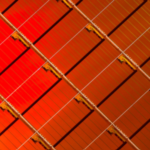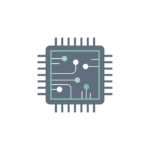The printed circuit board (PCB), on which the many electronic components coupled through both electrical and mechanical connections are built, serves as the brain of every electronic circuit. After a PCB has been designed using the proper CAD (Computer-Aided Design) tools, the relevant data must be communicated to the business that will manufacture the PCBs using the proper CAM (Computer-Aided Manufacturing) systems. A full set of PCB design-related data can be exported by the CAD software in one or more files that can then be imported by CAM systems to automate board fabrication. In this context, various standards for data interchange have been created, and the majority of CAD products now on the market support these standards. In this essay, we will compare the traits, advantages, and disadvantages of two of the most widely used standards now in use: Gerber and ODB ++.
Gerber file format
The Gerber file format was initially created by Joseph Gerber, who also founded the Gerber Scientific Instrument Company. It is currently the most popular standard for the production of printed circuit boards. In the past, when mechanical vector plotting was the only method for creating precise film masters, Gerber Scientific was the market leader in photoplotters used for filming. The Gerber standard, which was first introduced in the 1980s as a format for controlling vector photoplotters, has become increasingly popular as CAM tools for PCB manufacturing have proliferated. The designer normally sends the PCB manufacturer a single compressed ZIP file containing all of the Gerber files. A comparable Gerber file must be linked to each layer, ground plane, and power plane. Additionally, information about conformal coating, solder mask, and silkscreen must be included in the two outermost layers, referred to as “top” and “bottom,” and special files must be provided to programme the drilling equipment. Gerber files may be imported into CAM software more easily because they include common extensions like.TOP,.BOT,.SMT, or.SMB. The introduction of the “extended” standard, also known as RS-274-X, saw the Gerber format expand through time and become the de-facto standard for data transfer in the PCB industry. Nevertheless, it is clearly obvious that the Gerber format is the bare minimum and frequently lacks the essential data required for PCB manufacture. The use of multiple files gives the Gerber format, which was developed to send commands to numerically controlled machines (CNCs), a certain level of complexity. Additionally, the lack of three-dimensional information, such as the description of the holes, and the files’ near-incomprehensibility for a typical user make it impossible to carry out the required revision process. A four-layer board frequently needs at least 8–10 Gerber files to go along with it.
Gerber versions
RS-274D is the more popular name for the original Gerber file format, which was created by Gerber Scientific. The standard’s later upgrade, known as RS-274X, was released in 1998 in order to address various usage restrictions associated with the original format. With the help of this new format, it is no longer necessary to manually enter some data, and a number of photoplotter-related issues can now be fixed. The RS-274X standard has numerous practical drawbacks while being widely used. The stackup of the layers, for instance, is not explicitly described, which may result in board layouts where the layers are not in the proper sequence, and it is not possible to provide information on the location and features of holes.
The ODB++ standard
The Gerber format’s popularity has increased due to its clarity and readability, as well as the fact that it is a non-proprietary format, and the ODB++ standard might be seen as its main rival. Valor Computerized Systems Ltd., which was eventually purchased by Mentor Graphics and most recently by the industrial powerhouse Siemens, created ODB++ in 1992. As a result, the ODB++ standard now has a great possibility for expansion and can compete with a well-known industry format like Gerber. ODB++ is an open-source, non-proprietary format that is completely free to use. ODB++ was accepted as the sole official standard for data interchange pertaining to the fabrication of PCBs by the IPC (Institute of Printed Circuits) in 2008. ODB++, which was created by Valor as a comprehensive, self-extracting, and standardised format, may automate procedures for stackup, hole placement, and labelling. By combining information pertaining to the project, PCB fabrication, and netlists into a single compressed file, ODB++, which is supported by the most popular CAD software tools for PCB design, has made it possible to lessen the negative effects of human error on the project. The acronym ODB++, which stands for Open DataBase, is now offered in two separate iterations: ODB++ original and ODB++ X, which uses XML data structures. By offering an intelligent structure based on a single file to communicate PCB design information, ODB++ was initially developed to do away with the necessity to group files in multiple formats. The key component of the ODB++ standard is its hierarchical structure, which eliminates the need to work with multiple low-level files by enabling designers to send the PCB manufacturer more information, including materials used for the stackup, a bill of materials (BoM), component placement, board format, and size. It lessens the possibility of human error and incorrect data interpretation because of its entirely hierarchical nature.
Comparison of the ODB++ and Gerber standards
As seen in Figure 1, information pertinent to PCB fabrication is saved using the ODB++ format in a hierarchy of files and directories.

The PCB maker receives this structure after it has been compressed into a single file with a.tgz extension (or into a single XML file in the case of ODB++ X). The key advantages of the ODB ++ standard over the Gerber format can be summed up as follows: integrated design for manufacturing (DFM) support is provided for all layers. It enables a high degree of automation in all phases of PCB production. It is supported by all major manufacturers of CAD, CAM, and DFM. All information required for PCB production, assembly, and testing is contained within a single file; the risk of errors during the transfer of information is minimised, communication delays between designer and manufacturer are reduced. The ODB++ format includes a comprehensive table with all the details about the different layers, including their names, types, and the order in which they are placed to make up the stackup. In ODB++, the distinction between a pad and a conductor is considerably explicit, minimising ambiguity and potential misunderstandings, in contrast to what happens with data in the Gerber format. According to the layout of Figure 1, the key details are arranged as follows:
- Traces, solder mask, and silkscreen data are located in the “layers” section, which also includes any internal layers (the example in Figure 1 pertains to a four-layer board), the two outermost layers (top and bottom), and all data pertaining to holes and components.
- Stackup: The relevant “matrix” section defines the stackup’s composition.
- Electrical test: the “netlists/cadnet” section contains information on this.
- Components: Each component’s specification is located in the file’s “eda / data” section, while its location is specified in the sections “layers / comp + top” and “layers / comp + bot.”
Benefits of the ODB++ file format
The following list of key benefits of using the ODB++ format can be summed up:
- Greater security in the transport and interpretation of data.
- File format supported by all significant CAD and CAM tools. Public domain format, verified by the IPC authority.
- Figure 2 depicts the export of an ODB ++ file in.tgz format through Altium. This format supports flexible and rigid-flexible PCBs and enables designers to incorporate information that is not available in common formats like Gerber.
- Complicated holes, the netlist, any parts that haven’t been put together, information on the panel, and the stackup layout.

ODB++ is regarded as an intelligent format because it packs a tonne of data into a single file. These days, a lot of manufacturers choose to favour this format because it is simpler to understand and consequently easier to verify, lowering the possibility of errors. PCB manufacturers can avoid dealing with numerous low-level files by using ODB++.
Conclusions
When comparing the ODB++ format to older formats for data exchange between PCB designers and manufacturers, a clear improvement has been made. More designers are becoming attracted by the gains that may be made in terms of better quality, more effective production, shorter assembly times, and shorter time to market. Almost all PCB design system manufacturers currently implement the ODB++ standard. In addition, software tools, standards, technical documentation, and user assistance are all freely accessible on the ODB++ Design website [1].
References:
[1] https://odbplusplus.com/design/







